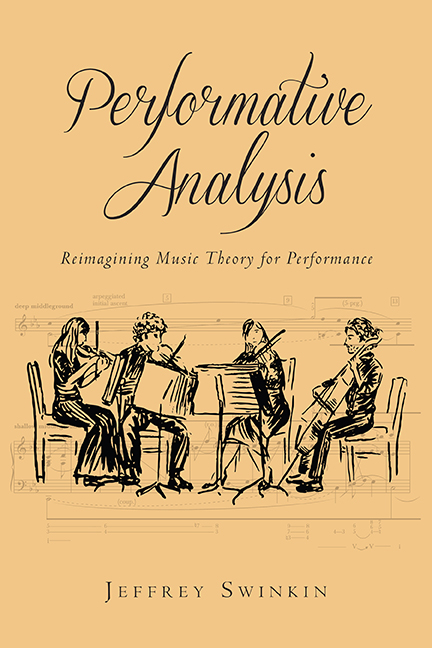3 - Schenkerian Analysis as Metaphor: Chopin, Nocturne in C Minor, Op. 48, No. 1
Published online by Cambridge University Press: 09 June 2021
Summary
In the previous chapter I argued that treating Schenkerian theory not as an explanatory mechanism but as a performative and metaphorical one (“hear the music as if …”) renders that theory more compatible with performance for two reasons. First, doing so ensures continual engagement with the musical surface in all its particularity, with the manifold ways in which the foreground interacts with structural lines and progressions. What is useful for performance are not the Ursatz and Zug in themselves but hearing the musical surface in relation to them. Second, I approach those higher-tier structures, along with processes such as interruption, reaching over, motivic parallelism, and so on less as cerebral abstractions than as tokens of somatic schemata, which in turn have expressive connotations. It is the physical and emotional experiences that inform and underlie Schenkerian (and other theoretical) constructs that the savvy interpreter can express, not the constructs per se.
In the following analysis, for the first (A1) section (ex. 3.1, graphed in ex. 3.2) I will proceed phrase by phrase, considering first musical structure then performance for each phrase.1 For the rest of the piece, I will get swept up in the musical narrative. Here, I won't spell out the implications of analysis for performance so explicitly. I won't need to, for the more overtly hermeneutic and experiential the analysis, the more naturally it will affect the performer, in ways that cannot and should not be precisely prescribed. Hence, as the analysis unfolds and the narrative takes over, I will be able to treat the analysis-performance interface less rigorously and entrust it more to readers’ intuitions.
To some readers, my procedure of starting with analysis and moving to performance might smack of the hegemonic stance I critiqued in the introduction. To clarify, the problem in my view is not granting analysis chronological priority but rather granting it epistemological priority. I believe my approach avoids that pitfall, since it conceives analysis as less an abstract realm than a sensuous and emotive one. As such, my analysis doesn't ask performance to ingest something foreign to it—namely, abstract concepts—but to draw from a realm of experiences common to performance and analysis alike.
- Type
- Chapter
- Information
- Performative AnalysisReimagining Music Theory for Performance, pp. 75 - 95Publisher: Boydell & BrewerPrint publication year: 2017



